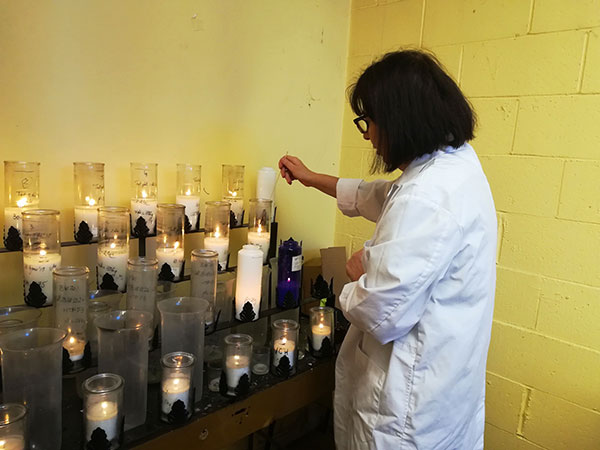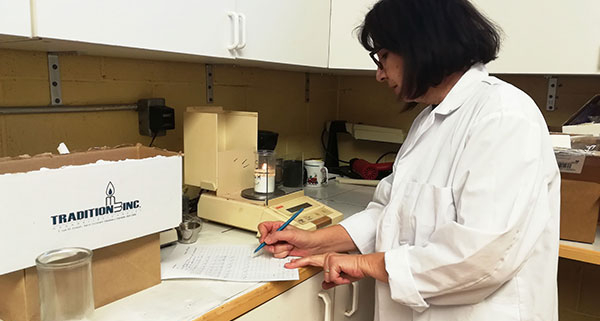The development of our candles in our laboratory
Making candles is pretty simple right?
For Aida Marton, our Head of Research & Development, making candles is much more complex than it looks.
Aida has been a part of our team for more than 20 years. She has always had a passion for sciences, especially chemistry and has specialized in organic chemistry and petrochemistry in high school, as well as solid state chemistry in university.

For her, nothing must be overlooked in the making of candles. It all starts in our laboratory, by choosing good raw materials. With her knowledge, considering all the physical and chemical properties of those materials, as well as the type of candle that is being made, Aida combines the ingredients in various proportions to obtain the appropriate formula.
Those materials are in solid form and are measured, melted then homogenized. For our candle, she uses different grades of paraffin and soy, coconut, palm as well as beeswax. Other minor ingredients like various additives, pigments or perfumes are added. The wax is then poured into a mold or a container and cooled down to become solid again.
The results are recorded, analyzed and adjustments are made on either the formula or on other factors like the chosen temperatures, the duration of the steps and more, until the optimal candle is obtained. According to Aida, this is easier said than done because every little change can sometimes alter significantly the result.
For example, did you know that for a colored candle, increasing the concentration of certain additives by 1% or 2% or the addition of perfume in the mix could lead to a drastic change in the intensity of the candle’s color? It has to do with the crystalline structure of the wax, the interaction between molecules, optical phenomena and more. Those are complicated things, but scientifically explainable.
And this is only the beginning! Want to know more? Don’t hesitate to look at our About page for more information!



